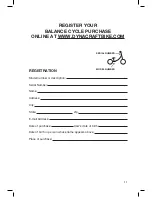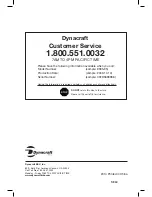
3
CORRECT FITTING
–
MAKE SURE YOUR HELMET
COVERS YOUR FOREHEAD.
CORRECT FITTING
–
MAKE SURE YOUR HELMET
COVERS YOUR FOREHEAD.
INCORRECT FITTING
–
FOREHEAD IS EXPOSED
AND VULNERABLE TO
SERIOUS INJURY.
USE, OPERATION, AND SAFETY
As a parent, you should read this manual before letting your child ride your
new Balance Cycle. The age grade of 3 to 4 years old is based on United
States government guidance on child development and appropriate toys, but
young children are all different. If your child walks and runs with confidence,
then the Balance Cycle will help your child develop balancing skills and learn
about steering. After walking while straddling the Balance Cycle your child
will then run and eventually “scoot” while seated with the feet off the ground.
The Balance Cycle has no brake.
To stop, your child merely stands up. You
can not expect your child to understand how difficult it is to stop on hills or at
speed, and your close supervision and sound limits about speed and grade
are required for your child’s safety. So encourage play and having fun with
the Balance Cycle, but keep it on flat surfaces or gentle slopes, always wear
shoes (never barefoot, sandals or flip flops), and avoid traffic and pedestri-
ans.
Remember only you are the best judge of whether your child is at
the appropriate development stage for safe play with the Balance Cycle.
Stopping is obviously very important. The seat on the Balance Cycle is low to
promote learning balance skills and to keep both of your child’s feet close to
the ground. Adjust the seat for comfort, but no higher than what will allow your
child to have both feet on the ground at the same time while seated
(See Assembly Instruction section).
Always have your child use safety equipment and appropriate clothes and
shoes. Safety equipment includes a helmet, knee pads and elbow pads. The
helmet is not only a good idea but required in many communities. To protect
your child, the helmet must comply with CPSC, 16 CFR Section 1203 require-
ments and be worn correctly.
CORRECT FITTING
Make sure your helmet
covers your forehead.
INCORRECT FITTING
Forehead is exposed and
vulnerable to serious injury.































